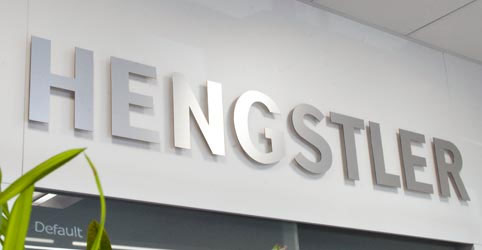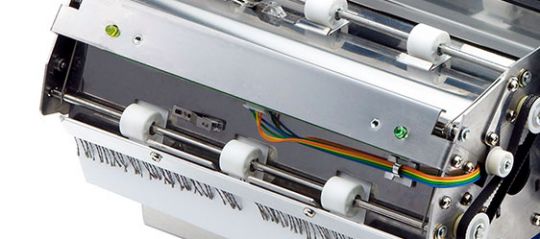
The selection of an operating voltage for thermal printers depends upon the application’s environment and available hardware. If the application will be an On-Street-Parking Meter that is solar and battery powered, you will most likely choose a 12 Volt printer over a 24 Volt printer. Will you need a cooling or heating element? Are other components going to need power such as displays or other peripherals? These questions and their answers will determine whether to use a 12 Volt or 24 Volt printer.

Typically, 24 Volt are used when “regular” power is available. Solar power asks for 12 Volt. Thermal printers draw high currents for very short time periods (usually under one millisecond). The most important issue is not peak current, but the length of time that the power supply is able to deliver instantaneous current over its rated maximum, and for how long the print job prints black percentages, thereby drawing high current. It is important that the power supply’s over-current system does not shut down the power supply when these brief, high current surges occur.
With that said, we recommend the following power supply specifications for most 24 VDC applications:
The holdup time is used to buffer peak current demands when printing dense graphics and to prevent the power supply from shutting down quickly.
Current consumption is controlled by several factors, most importantly by the density of what is being printed. For example, if the same receipt is printed on a 60 mm or 80 mm printer, the current consumption will be approximately the same, since the same number of dots is being fired on both printers. Current consumption is also affected by whether the heating elements are fired as one block, the burn time (the length of time that the dots are on), whether graphics are being printed, and other factors. It is possible to manipulate these factors consciously to reduce current draw for situations where this is important, such as operating from batteries. The following are some considerations to aid in reducing current draw.
With thermal printers, average current is somewhat proportional to print speed. When printing slower there is more pause between burns and therefore a lower average current. The peak current is determined by the number of dots burned at once, and so is unaffected by print speed. The slower this print speed is, the lower the average current draw will be.
Typical text only printing is considered to be 12.5% coverage on average, while graphic printing (logos, images) varies from 25% to 50% average, consuming 2x to 4x the average current. Printing barcodes is in the same category as graphic printing. In terms of current draw, it does not matter whether printing is done using the printer’s internal character set or via the driver.
In this mode, text is printed inversely, i.e. white on black background. It is obvious that this mode increases the dot density and current draw by a factor of 6.
Some printers include a feature that will adjust burn time automatically depending upon ambient temperature. Burn Time Correction allows the adjustment of these burn times to “tune” the printer to maximum performance for any given paper, thereby improving print quality. As a consequence, the current draw will slightly increase at lower temperatures.
This feature is a software feature that will reduce peak current. When this feature is turned on, only one side of the printhead is fired at a time, reducing the peak current by a factor of two, but having virtually no effect on average current. This is very useful if your power supply has a restrictive maximum current but slows printing.
Increasing print density will improve print contrast, but at the same time will increase average current. Therefore, Print Density is always a trade-off between these two characteristics. Use the lowest print density that is visually acceptable to minimize current draw.
The HENGSTLER team is expert in matching printers to the application. Whether it’s gas pump receipts, bank statement printers, railway ticketing systems, kiosks, fire alarm systems, or just about anything else, we’ve seen it and can help locate and integrate the best-suited printer for the purpose needed. Moreover, we can support our customers effectively by offering tailor-made application projects. Contact us today with your application or challenge